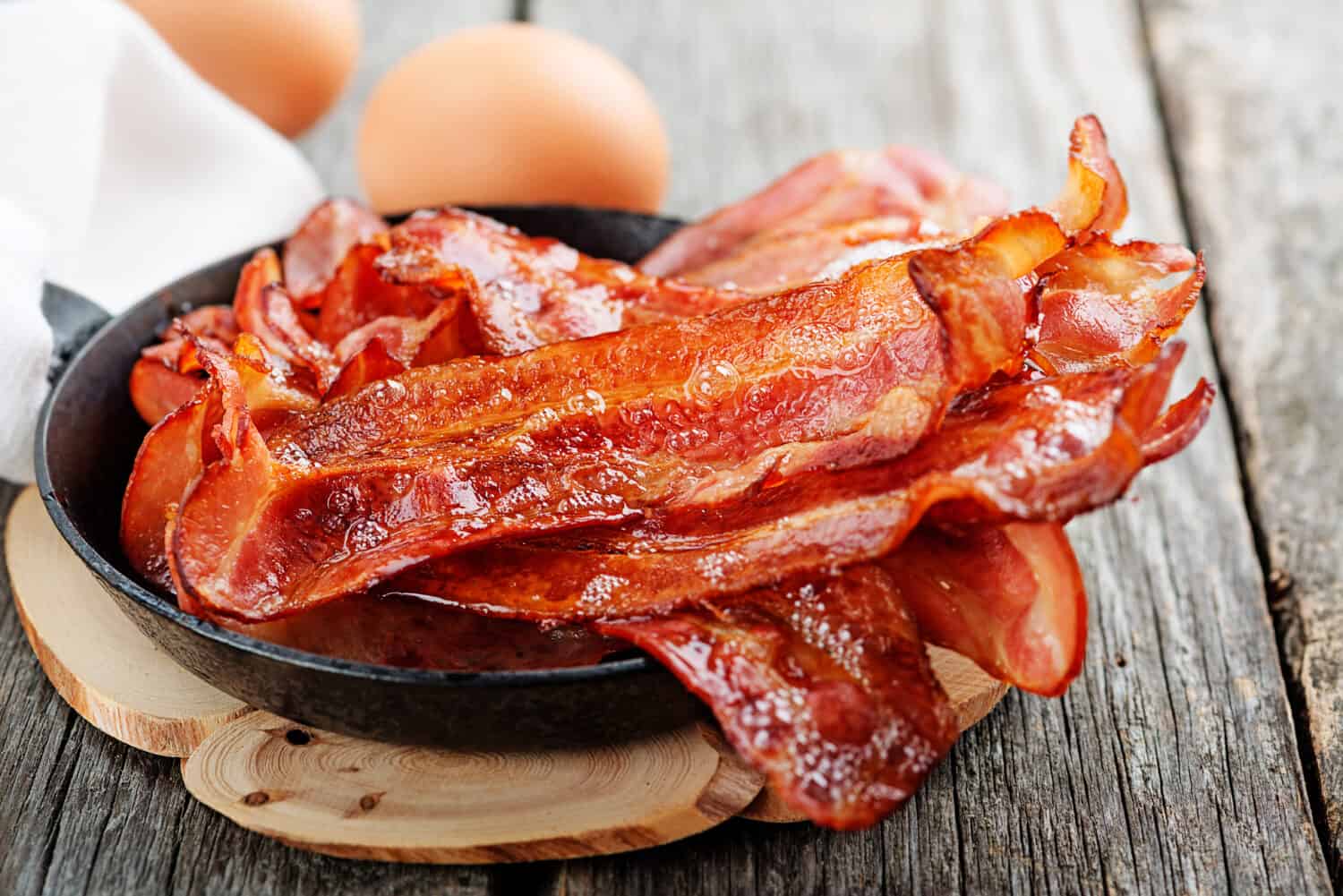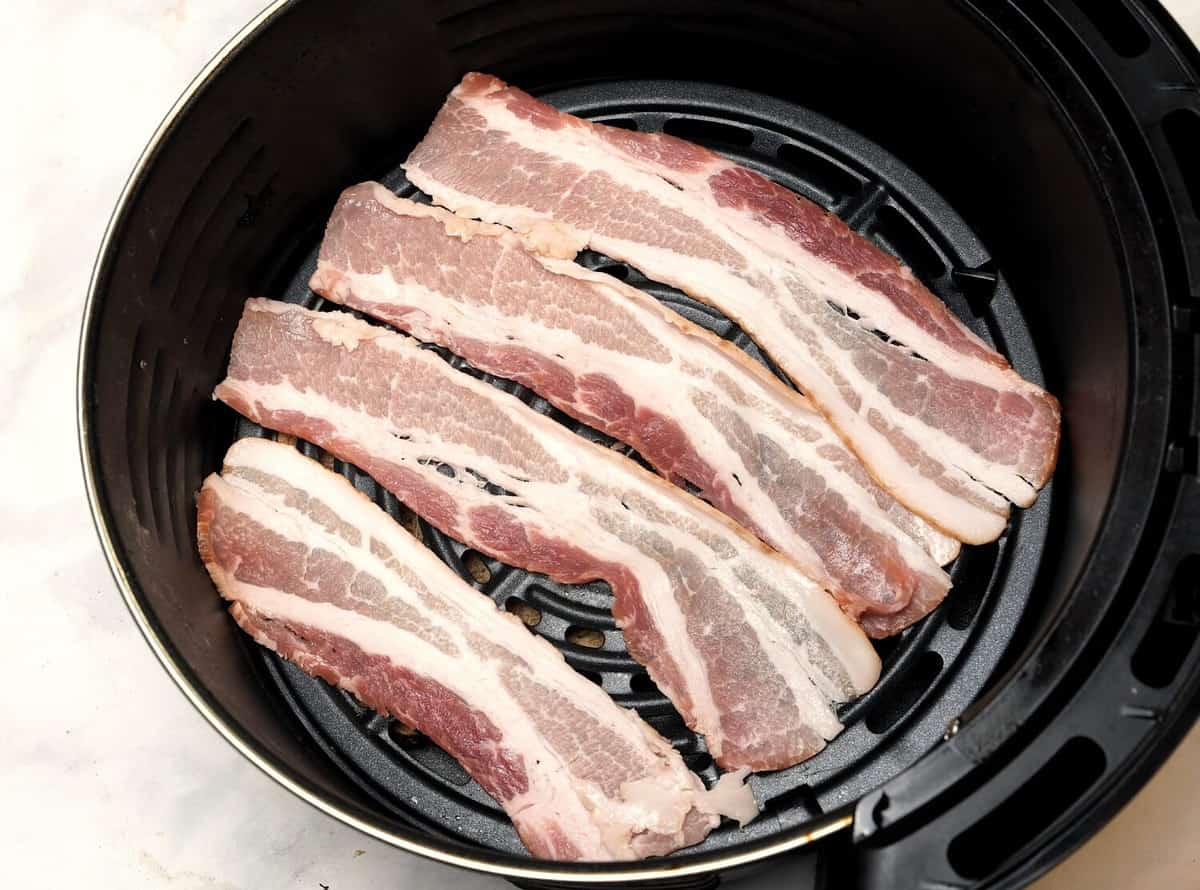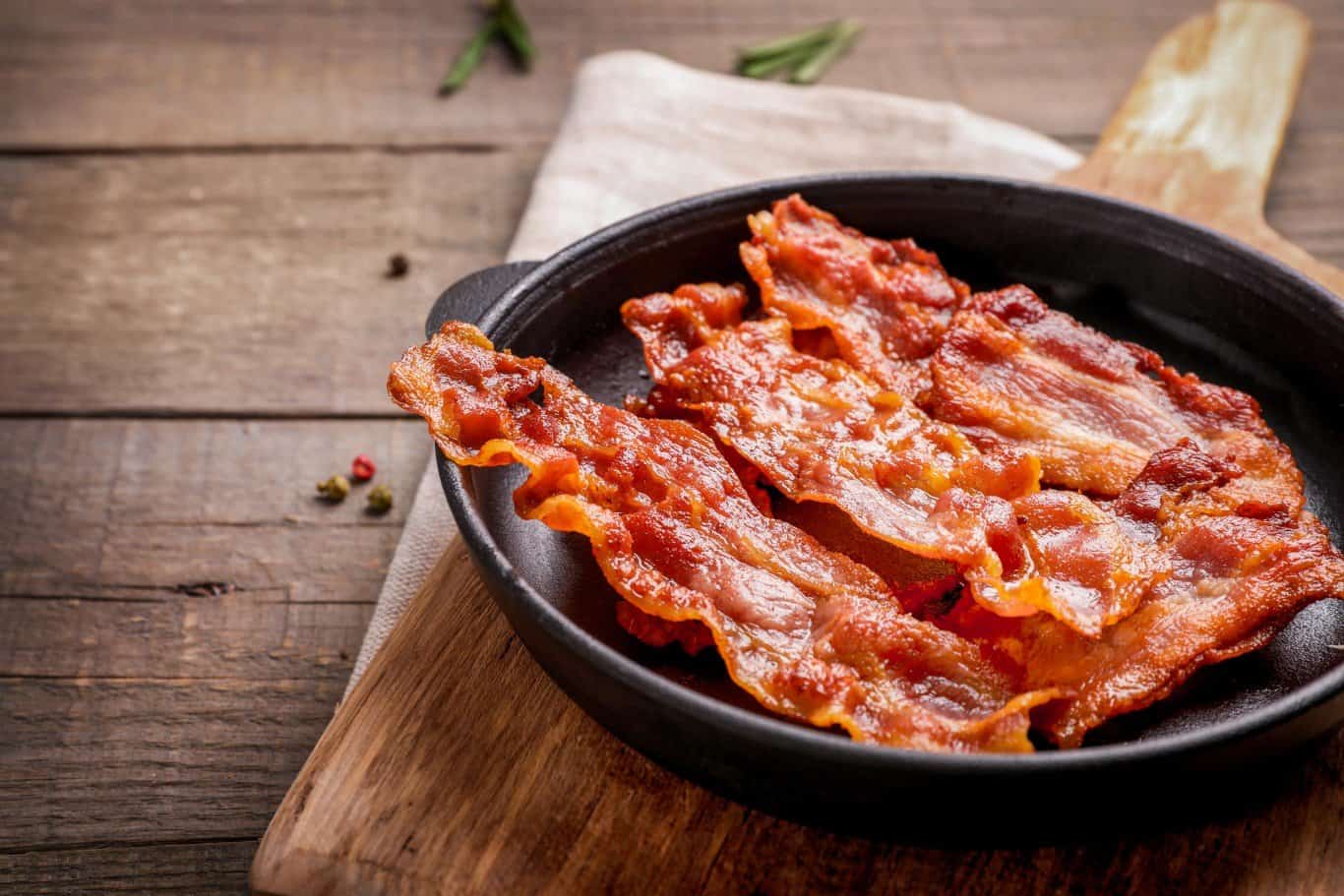Bacon is one of the most popular foods in the United States. Americans on average consume more than 18 pounds of bacon each year and in 2023 alone the tasty breakfast staple generated $6.3 billion in sales in the U.S. alone. Its popularity has taken it behind breakfast and it's found in many different dishes, from soups and salads to sandwiches and pastas.
There are different types of bacon as well – Canadian, Irish, slab, streaky, Pancetta, Guanciale, Lardon, back, and more, and each one comes from different cuts of pork, usually the belly or part of the back and sides which are less fatty. Bacon has always been thought to be unhealthy, but is it really that bad? In this article, we will investigate the nutritional benefits, vitamins, and health concerns of bacon.
What Is Bacon?
The name comes from the Proto-Germanic bakkon, which means back meat. Bacon is usually made from turkey or pork and is cured and soaked in a salt mixture that contains nitrates before being smoked. By adding nitrates and salt, the meat becomes an unfavorable place for bacteria to grow, thus resulting in a longer shelf life.
Bacon is versatile and can be used in greasing, dressing, and flavoring roasts. As with any processed meat, it is best to consume bacon in small amounts as it may be linked to heart disease and cancer.

©nelea33/Shutterstock.com
Cuts of Bacon
There are five different cuts of bacon.
- Back bacon: This cut comes from the loin, which is located in the center of the pig's back. It has less fat compared to side bacon. In Ireland and the UK, back bacon is the most commonly eaten bacon.
- Side bacon: Comes from the pork belly and has overlapping layers of muscle and fat. It is the most common type of bacon in the United States. Pancetta is a type of side bacon with a strong flavor, also known as Italian bacon. Pancetta is not smoked and is cured with pepper, salt, and spices and rolled into a cylinder shape. It is often used in pasta, carbonara, and soups. It can be stored in its original packaging for up to 12 months. Once opened, it can stay in the fridge for 2-3 weeks and 3 months in the freezer. Pancetta is also high in fat and should be eaten in moderation.
- Cottage bacon: This type of bacon is from the boneless part of the pork shoulder and is lean.
- Jowl bacon: This is a cut of pork from the pigs' cheeks; it can be fried and eaten, similar to streaky bacon. It can also be used as a garnish, similar to bacon bits.
- Collar bacon: This cut is taken from the loin eye muscle in the shoulder; it is rather fatty and known as ribeye.
Is Bacon Healthy?
There has always been a debate as to whether bacon is healthy. It is high in fat and sodium and when eaten in large amounts, bacon can contribute to health issues. According to the World Health Organization, bacon has been classified as a Group 1 carcinogen. This means that it is known to cause cancer because of the preservatives used, which can create cancer-causing compounds.
Furthermore, consuming processed meats can increase the risk of Alzheimer's and dementia. It is thought that the nitrite can increase inflammation, which is a risk for dementia. The amount of salt in processed foods can also contribute to high blood pressure. Additionally, bacon is also a good source of protein, minerals, and vitamins. While the vitamins and minerals are low, bacon does contain:
- vitamins B1, B2, B3, B5, B6, and B12.
- Choline
- Magnesium
- Phosphorus
- Zinc
- Selenium
Let's take a closer look at the nutritional profile of bacon.
Nutritional Profile of Bacon
| Serving size 3 slices (35g) | Based on a 2000-calorie-per-day diet |
|---|---|
| Calories | 161 |
| Total Fat | 12g |
| Saturated Fat | 4.1g |
| Trans Fat | 0.1g |
| Polyunsaturated Fat | 2.1g |
| Monounsaturated Fat | 5.4g |
| Cholesterol | 34mg |
| Sodium | 581mg |
| Total Carbohydrates | 0.6g |
| Dietary Fiber | 0g |
| Sugars | 0g |
| Protein | 12g |
| Vitamin D | 0.1mcg |
| Calcium | 3.8mg |
| Iron | 0.3mg |
| Potassium | 172.2mg |
| Caffeine | 0mg |

©Nancy Salmon/Shutterstock.com
How To Cook Bacon
Bacon can be cooked in various ways, including in an air fryer, microwave, oven, stovetop, and grill. Here’s how to do it.
In an air fryer or oven:
- Cover a sheet pan with foil and put a metal baking rack on top.
- Place your strips of bacon on the backing rack.
- Based on the thickness of the bacon, cook for 10-12 minutes at 400 °F
In the microwave:
- Put a paper towel on a plate and put the bacon on top.
- Next, cover the bacon with a paper towel.
- Cook the bacon for approximately 4 minutes on high until crispy.
On the stovetop:
- Cook the bacon slowly over medium heat in a nonstick pan.
- There is no need to add oil because it will let off its fat while it cooks.
- Make sure the bacon doesn’t burn, and turn the slices.
- Once cooked, take the bacon out of the pan and allow it to cool on a paper towel.
On the grill:
- First, preheat the grill to medium-low heat.
- Cover a baking sheet with foil, then put a metal rack on top.
- Put the bacon on the rack.
- Finally, place the baking sheet on the grill grate and cook for about 10 minutes with the lid closed.
- Once done, put the bacon on a paper towel, allowing it to absorb the extra grease.
Healthy Bacon Alternatives
However, while bacon may be enjoyed in moderation, there are many healthier alternatives known as fakon. Let’s take a look.
- mushrooms
- coconut bacon
- tofu
- carrot bacon
- chickpeas
- rice paper bacon
- tempeh
- smoked vegan cheese.
- turkey bacon
- eggplant bacon
- bacon salt
To get the most out of bacon, try adding it to healthy dishes with more vitamins and minerals, like:
- broccoli salad
- bacon corn stuffed peppers
- risotto with bacon and peas
- bacon-wrapped monkfish
- cod with bacon and balsamic tomatoes
- Sunday brunch egg casserole
The image featured at the top of this post is ©LumenSt / iStock via Getty Images.
